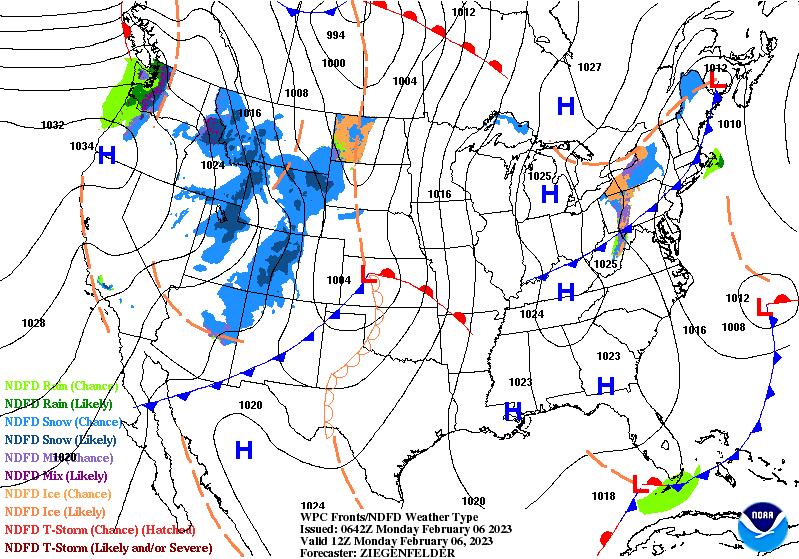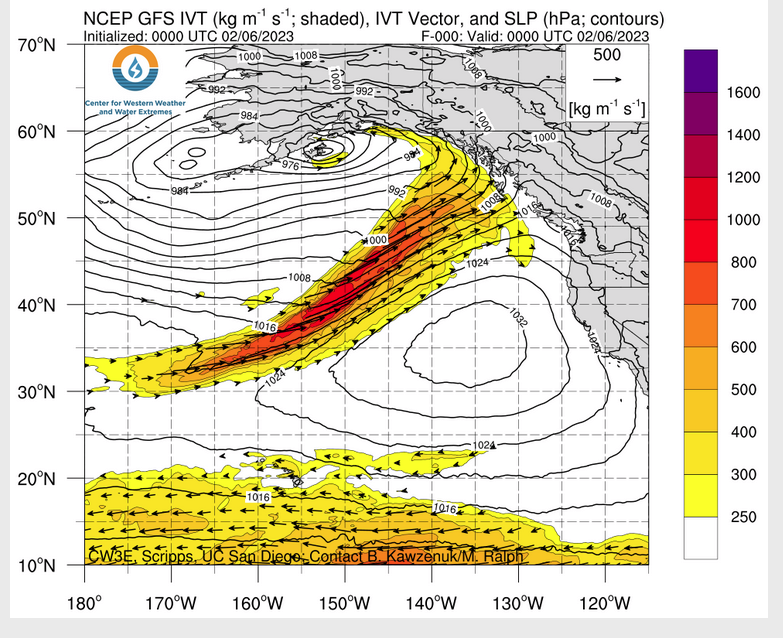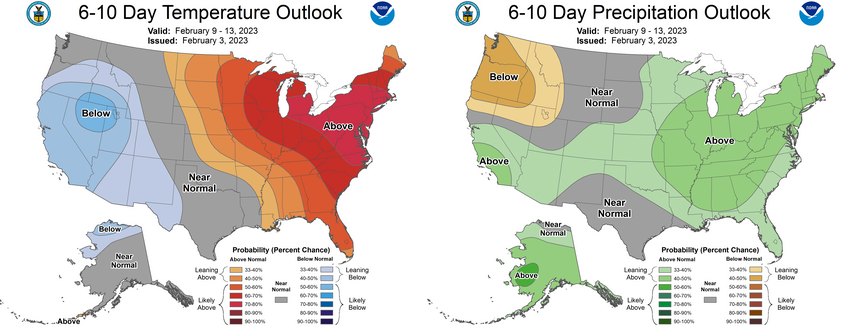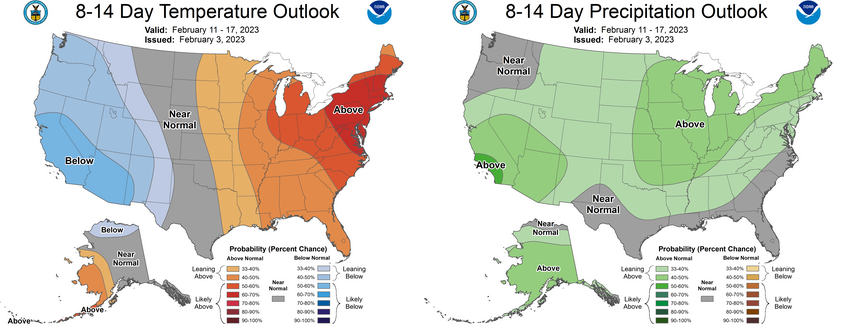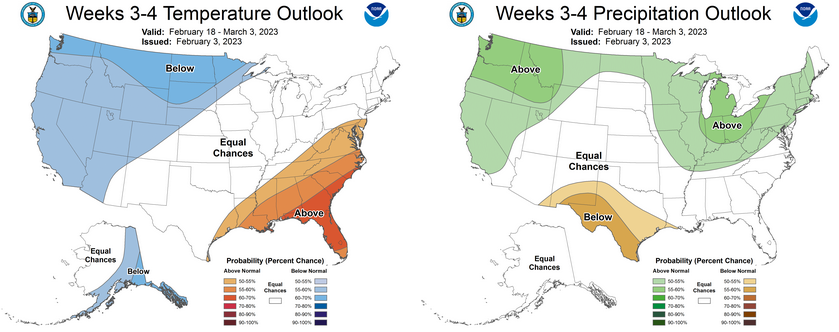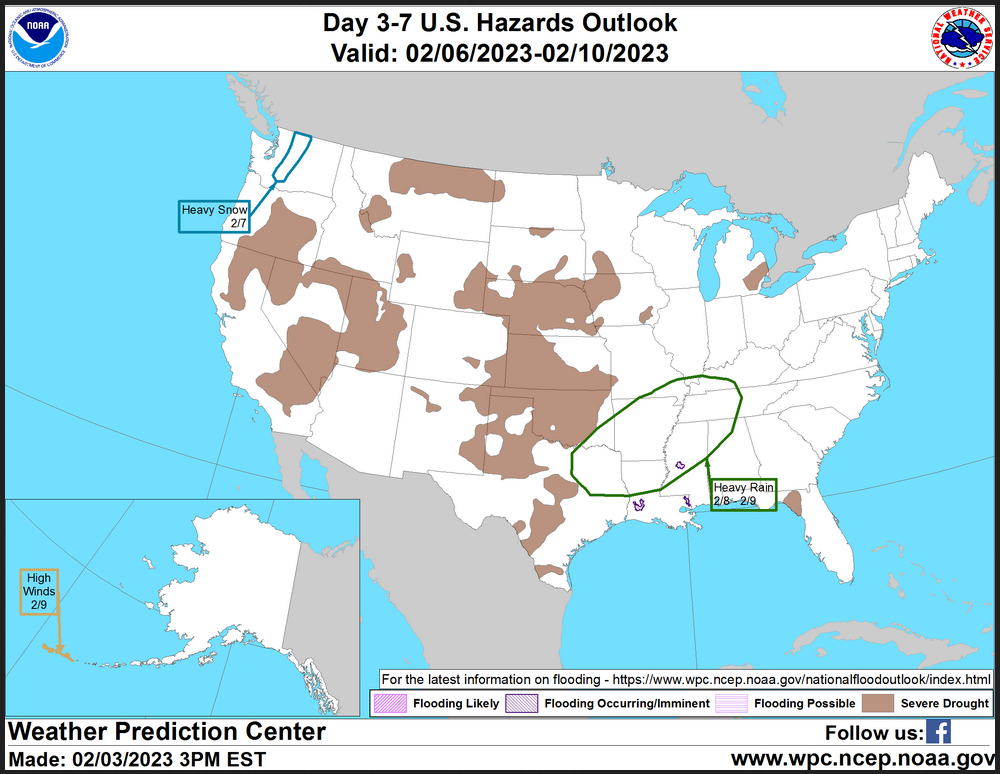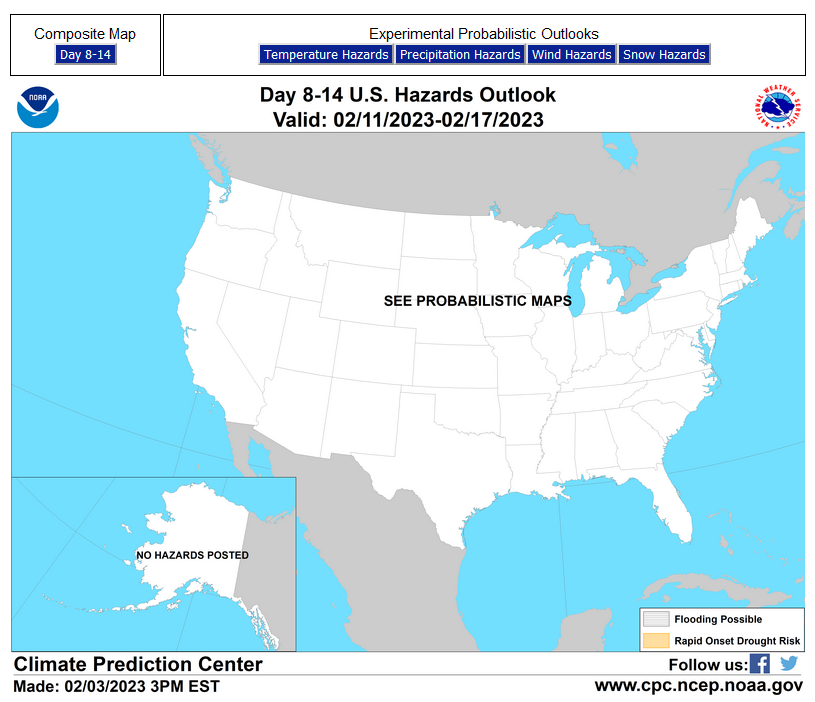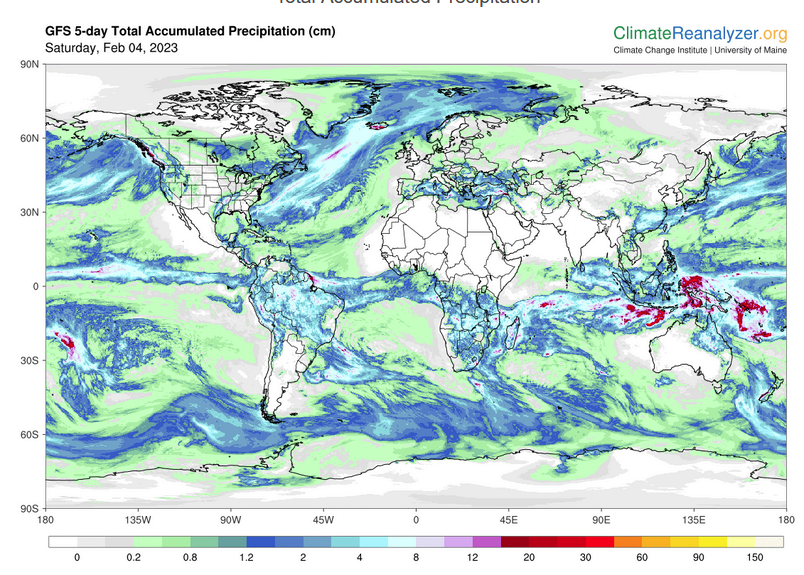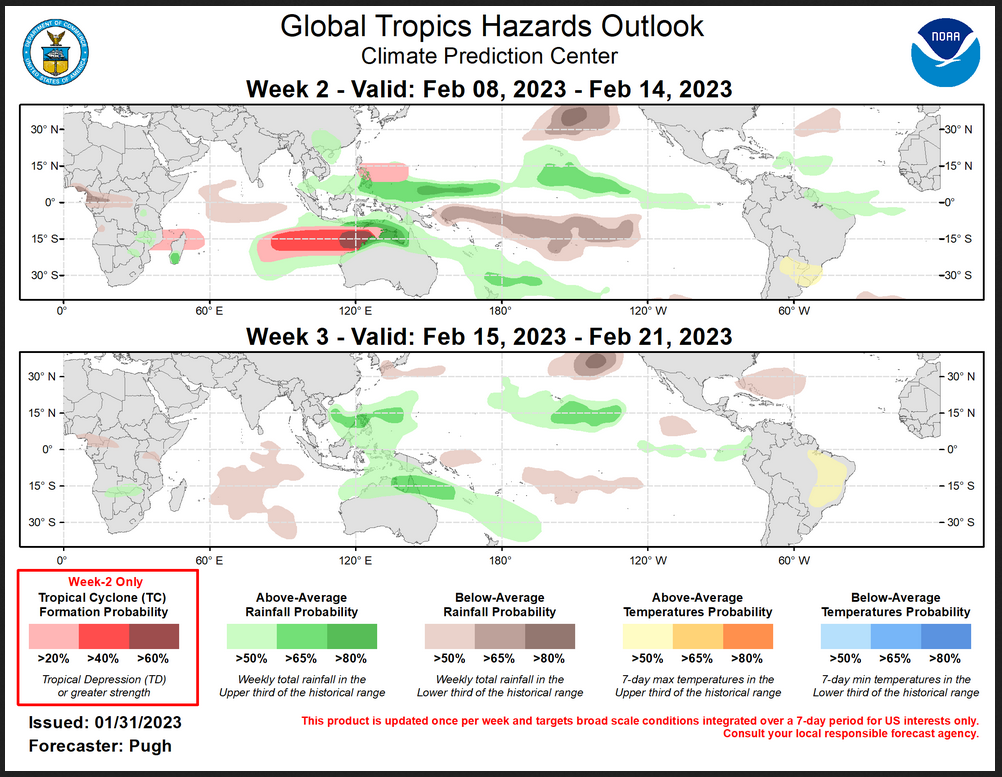Updated at 3:42 p.m. EST Monday, February 6, 2023
Here is what we are paying attention to in the next 48 to 72 hours. This article also includes World weather forecasts.
It also includes links for longer-term outlooks and sometimes (like today) we show the maps that one finds if one clicks on those links. But we can not update all of those maps each day so look at the date and the duration of the period of time involved. If you want a more up-to-date map, click on the provided link which may be located in a table of links. If the date in the title of the article is not today’s date. just go to Econcurrents.com and look for today’s weather article.
We start with the U.S. Information.
Short Range Forecast Discussion
NWS Weather Prediction Center College Park MD
300 PM EST Mon Feb 06 2023Valid 00Z Tue Feb 07 2023 – 00Z Thu Feb 09 2023
…Widespread showers and thunderstorms with the risk for flash flooding
from the Southern Plains to the Mississippi Valley……Heavy lower elevation/coastal rain and mountain snow for the Pacific
Northwest……Unseasonably warm temperatures continue for the eastern two-thirds of
the country…

First, the 48-Hour Forecast (It is a 48 to 72 Hour Forecast actually)
Daily weather maps. I try to keep the below three maps updated. The Day 1 map updates twice a day and the Day 2 and 3 maps update only once a day. I will be doing the updating during the period described in the title of the article but if you happen to read this article later, you can get updates by clicking HERE
TODAY (or late in the day the evening/overnight map will appear)
TOMORROW
NEXT DAY
This animation shows how things may play out over the next 60 hours. To update click here.
ATMOSPHERIC RIVERS
Continuation of the NWS Short Range Forecast (It is updated by NWS twice a day and these updates can be found here. We post at least one of those updates daily, sometimes both. The Highlights are shown in the lede paragraph of this article.
A low pressure system/cold front moving across the Plains and Mississippi
Valley will bring showers and thunderstorms to the region Tuesday into
Wednesday. Anomalously moist air from the Gulf of Mexico has begun to
return northward ahead of the cold front forecast to move through the
Southern Plains during the day Tuesday. Storm coverage is expected to
rapidly increase by Tuesday evening along the front as the low-level jet
strengthens and an intensifying jet streak provides more upper-level
forcing. The high moisture available as well as sufficient instability
will lead to rain rates between 1-2″ per hour. In addition, mean flow
roughly parallel to the front will lead to the tendency for storms to
repeat over the same areas and contribute to higher rainfall totals. There
is a Slight Risk of Excessive Rainfall for northeastern Texas, eastern
Oklahoma, and northwestern Arkansas where the overlap of heavy rainfall
potential and wet antecedent conditions may lead to a few scattered
instances of flash flooding. The storms will continue into the day
Wednesday, spreading eastward with the front towards portions of the
Middle and Lower Mississippi Valley. Another Slight Risk of Excessive
Rainfall is in place from northern Arkansas into southeastern Missouri
where the threat for some flash flooding will continue. The cold front
will begin to speed up by Wednesday evening, lowering the threat for flash
flooding as more progressive storm motions will result in lower rainfall
totals overall. To the north, a wintry mix is expected for the Upper
Midwest/Great Lakes overnight Monday, spreading east to New England
Tuesday night. A glaze to a tenth of an inch of freezing rain will be
possible. Any snow and sleet accumulations should remain light.Another frontal system is forecast to move into the Pacific Northwest
Tuesday bringing heavy rain to lower elevations near the coast, especially
for the Olympic Peninsula where several inches are possible. A Winter
Storm Watch is in effect for the Cascades with 10-14″ of snow, locally
higher, forecast. The front will push eastward into the Rockies and
southward into the Great Basin by Wednesday, with snow chances increasing
for portions of the Northern Rockies. Snow totals should generally be
between 4-8 inches, with some locally higher amounts over a foot possible,
particularly in Montana. Some light rain and a wintry mix is forecast for
lower elevation/valley locations, with little to no snow accumulations
expected. Temperatures will generally remain seasonable across the West,
with highs Tuesday and Wednesday in the 30s and 40s for the interior/Great
Basin, 40s and 50s for the Pacific Northwest and northern California, and
the 60s and 70s for southern California and the Desert Southwest.Even as multiple weather systems traverse the country, colder, arctic air
will stay to the north over Canada as temperatures remain unseasonably
mild for most locations east of the Rockies. Highs Tuesday and Wednesday
will be running 10-20 degrees above average. Temperatures in the Northern
Tier from the Plains east to the Great Lakes and New England will
generally be in the 30s and 40s. Locations from the Central Plains east
through the Middle Mississippi Valley, Lower Great Lakes, and northern
Mid-Atlantic will be in the 40s and 50s. Spring-like temperatures in the
upper 50s to mid-60s are forecast for the Ohio Valley and southern
Mid-Atlantic, with upper 60s to upper 70s for the Southeast. One exception
will be in the Southern Plains, where temperatures will be cooler
following the passage of the cold front. Highs will be in the 40s for the
Southern High Plains Tuesday, with temperatures in Texas as high as 80
prior to the cold front passage on Tuesday dropping to the mid-50s to
mid-60s Wednesday.
Below is the current five-day cumulative forecast of precipitation (Updates can be found HERE)
Now we look at Intermediate-Term “Outlook” maps for three time periods. Days 6 – 10, Days 8 – 14, and Weeks 3 and 4. An outlook differs from a forecast based on how NOAA uses these terms in that an “outlook” presents information as deviation from normal and the likelihood of these deviations.
Below are the links to obtain updates and additional information. They are particularly useful if you happen to be reading this article significantly later than when it was published. I always try to provide readers with the source of the information in my articles.
HAZARDS OUTLOOKS
Click here for the latest complete Day 3 -7 Hazards forecast which updates only on weekdays. Once a week probably Monday or Tuesday I will update the images. I provided the link for readers to get daily updates on weekdays. Use your own judgment to decide if you need to update these images. I update almost all the images Friday Night for the weekend edition of this Weather Report. So normally readers do not need to update these images but if the weather is changing quickly you may want to.
Month to Date Information
Temperature month to date can be found at https://hprcc.unl.edu/products/maps/acis/MonthTDeptUS.png
Precipitation month to date can be found at https://hprcc.unl.edu/products/maps/acis /MonthPNormUS.png
World Forecast
Below are the 5-Day forecasts for temperature and precipitation. Updates and much additional information can be obtained HERE
This information is provided by the University of Maine. They draw upon many different sources. There is a lot of information available at the link provided. I have just provided two useful forecasts. There are probably over a hundred different forecasts available from this source.
 Worldwide Tropical Forecast (This is a NOAA Product)
Worldwide Tropical Forecast (This is a NOAA Product)
This graphic updates on Tuesdays) If it has not been updated, you can get the update by clicking h ere Readers will only have to do that if they are reading this article much later than the date of it being published.-
–
| I hope you found this article interesting and useful. |
